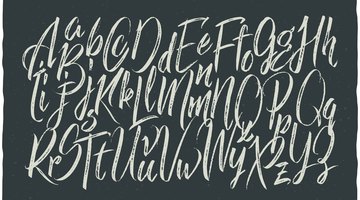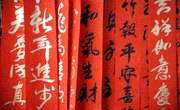Types of Cursive Writing
Most adults develop their own unique way of writing, usually cobbled together from printing and cursive techniques. In schools, one form of cursive is usually chosen and taught, and most often it's one of four common cursive handwriting types: New American Cursive, Handwriting Without Tears, D'Nealian and Zaner-Bloser.
Cursive can also be used in calligraphy work, as well as in some professional penmanship needs. Cursive needs to perform legibility to the reader, so pay attention to letter formation and modern cursive techniques. Spacing and ligatures is also important to its use in beautiful handwriting, as well as descenders and ascenders for certain letters, as well as pen lifts when using certain cursive or calligraphy pens.
Cursive is different from using italic changes to words, so learn how to correctly use cursive letters in your own handwriting. Italic cursive is also common in different styles of cursive writing. The different styles of cursive vary, but they all use similar techniques when writing and using letterforms. Teaching cursive and learning cursive can be challenging at times, but paying attention to uppercase letter and lowercase letter differences is a key tool for its use.
The cursive alphabet is a key tool for learning cursive fonts and cursive script itself. Those with dyslexia may have a difficult time learning cursive, but it is normally taught to students in elementary school, like first grade, and helps improve fine motor skills like normal handwriting. Handwriting worksheets are a great way to learn this form of writing, and handwriting practice is also useful for correct style. Of all the types of handwriting, cursive is often the most difficult for new learners.
New American Cursive
New American Cursive is designed specifically for students who are just learning to write in cursive. The letters slant slightly to the right, which is less tiring for beginners and left-handed children, and unnecessary strokes have been eliminated. There are fewer loops and flourishes than in other cursive handwriting styles, and the look is very simple and uncluttered.
Handwriting Without Tears
Handwriting Without Tears was designed to do just that -- simplify the handwriting process. In fact, the program was created by an occupational therapist. The letters were purposefully designed to look like a printed font so that they are easily recognizable by children learning to read. The letters are more upright, with fewer flourishes, and the continuous flow stroke is easier for children who struggle with handwriting.
D'Nealian Handwriting
D'Nealian handwriting became popular in the 1980s and its most recent incarnation -- Modern Manuscript -- is widely used today. The cursive form is designed to play directly off the manuscript letters -- to write in cursive, you simply connect the "hooks" or "tails" on the ends of each manuscript letter. For this reason, it is essential that children are first taught D'Nealian manuscript before they learn D'Nealian cursive. The strokes are continuous -- the pencil is never lifted while writing a letter and rarely lifted while writing a word.
Zaner-Bloser Handwriting
Zaner-Bloser held the title of most popular handwriting program until D'Nealian introduced Modern Manuscript. As a result, Zaner-Bloser changed its own design to incorporate continuous stroke and simplified some of its capital letters. The letters slant to the right and many have tails and hooks similar to D'Nealian's letters.










